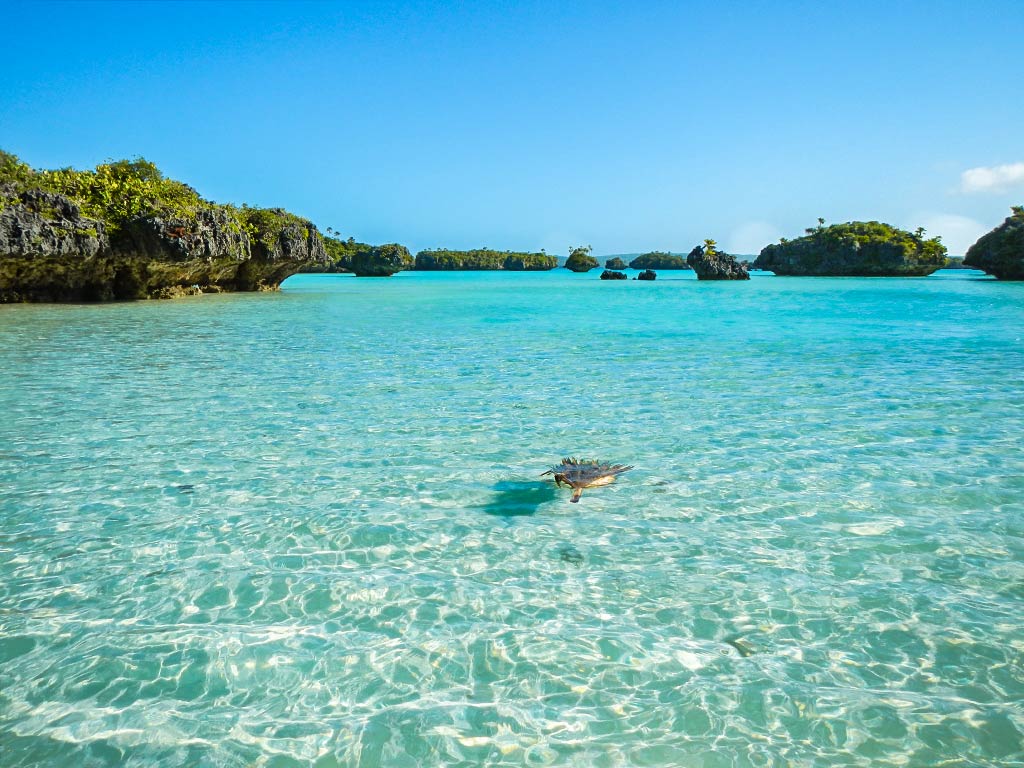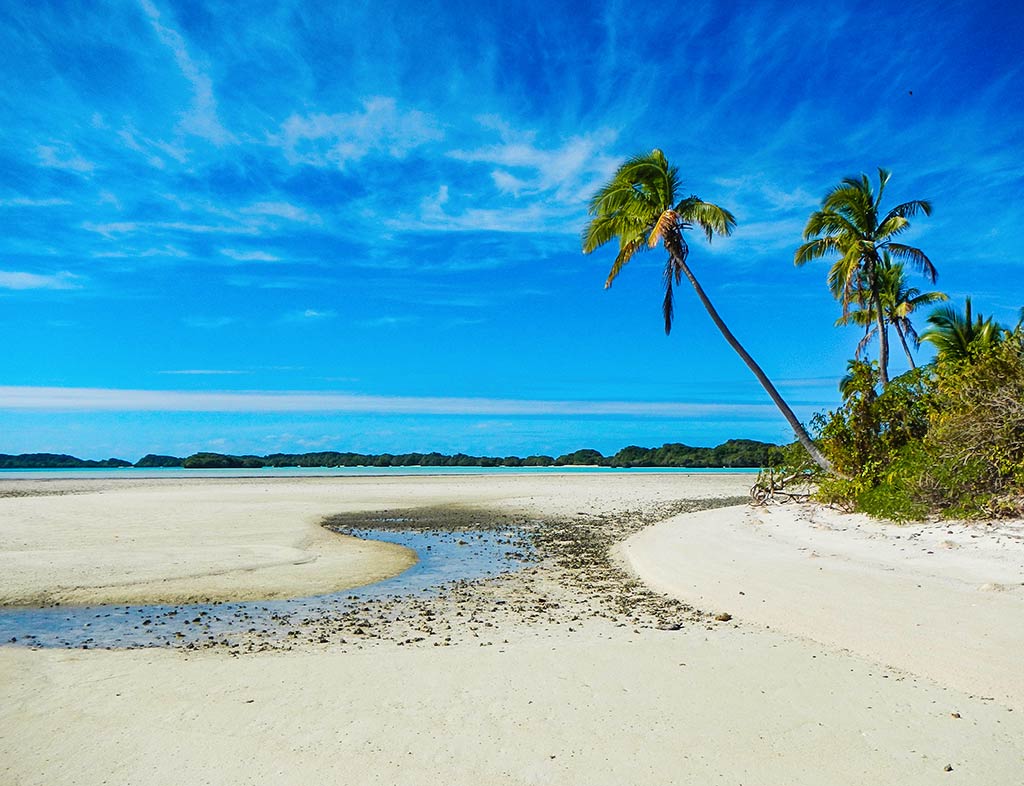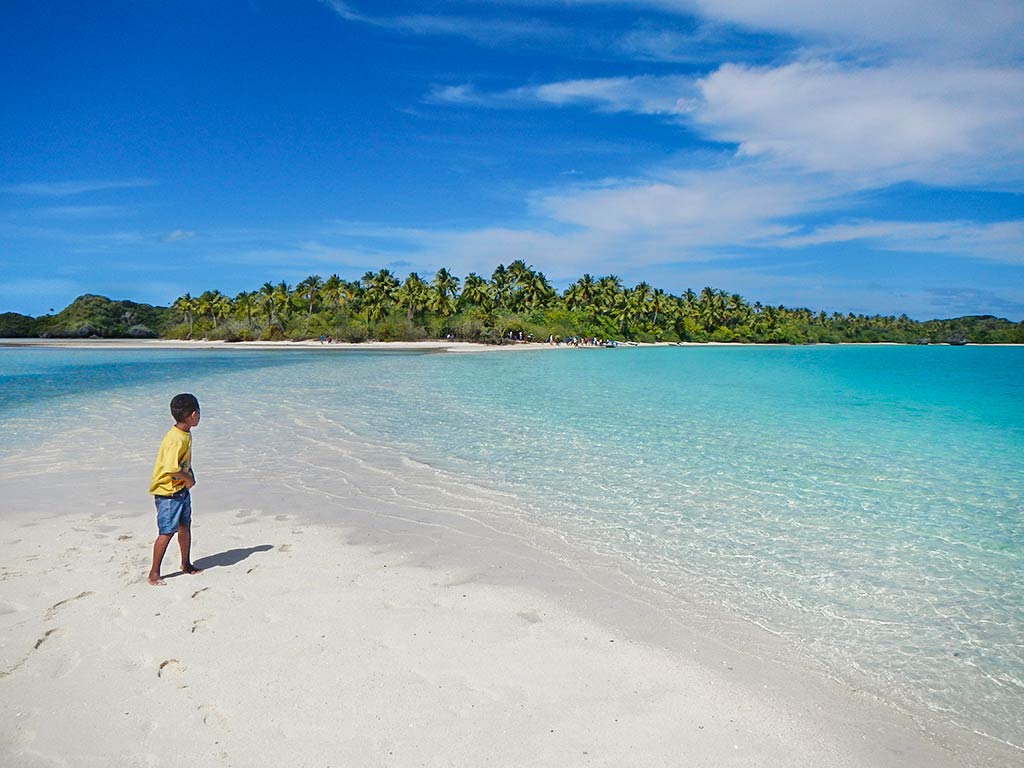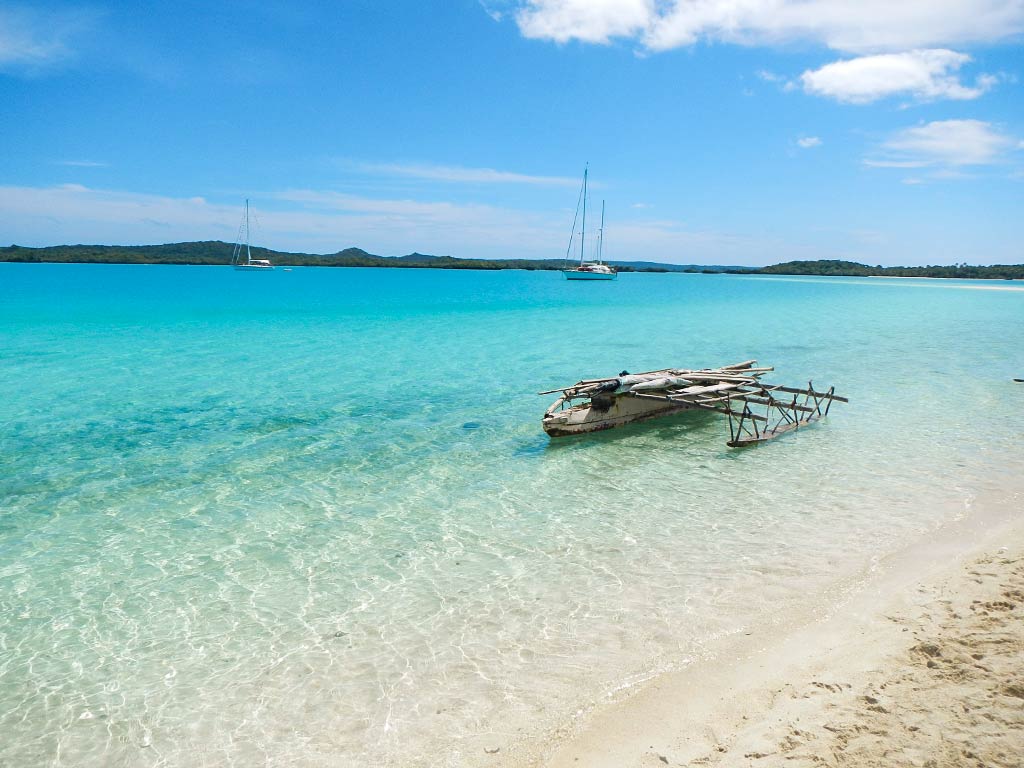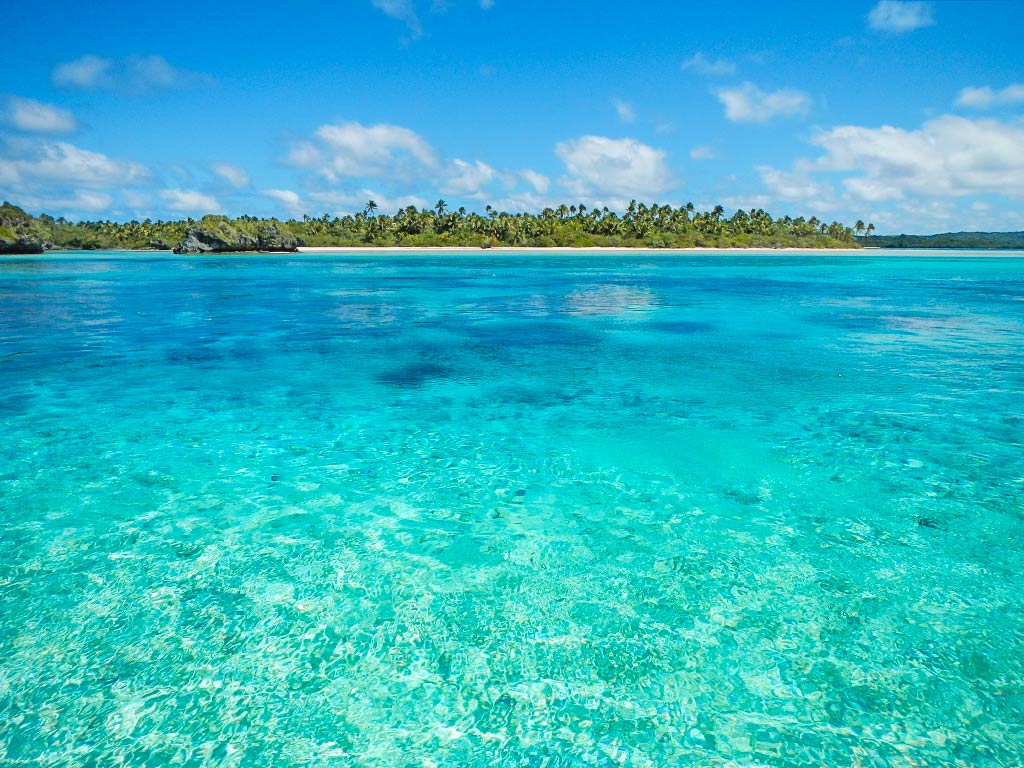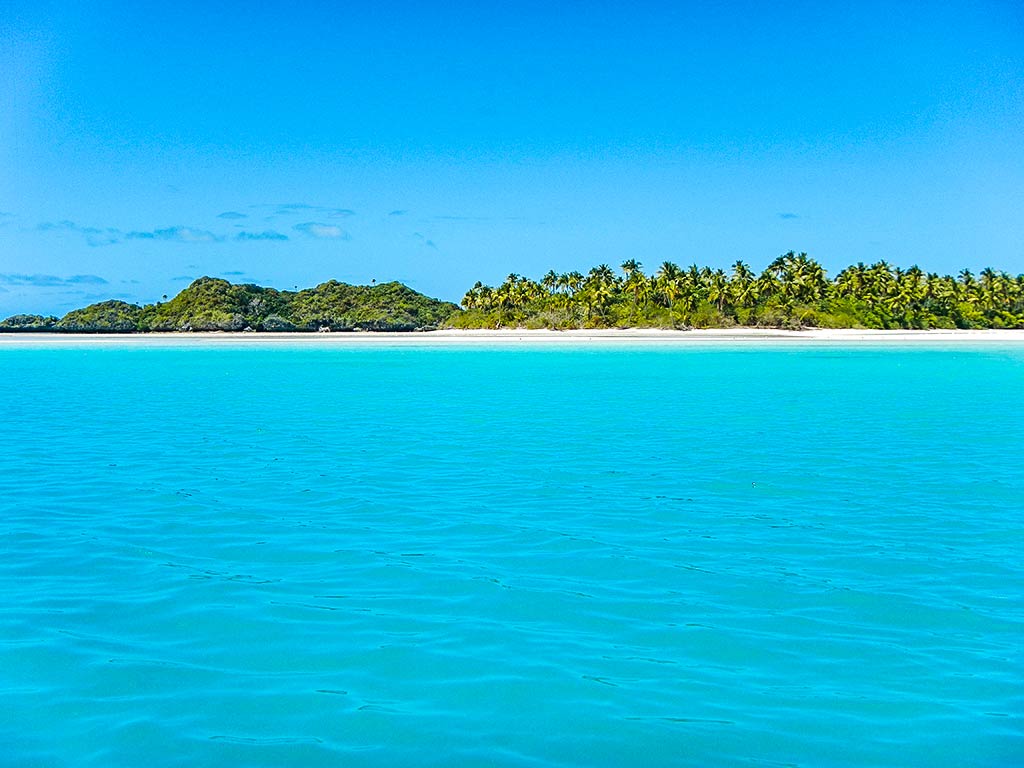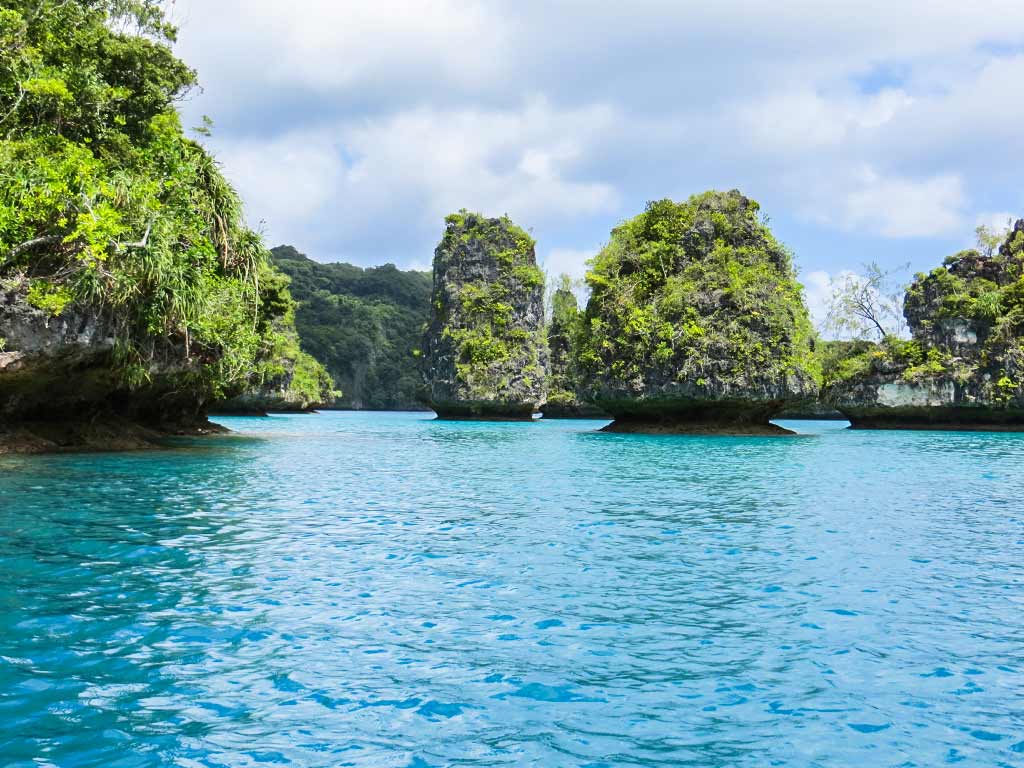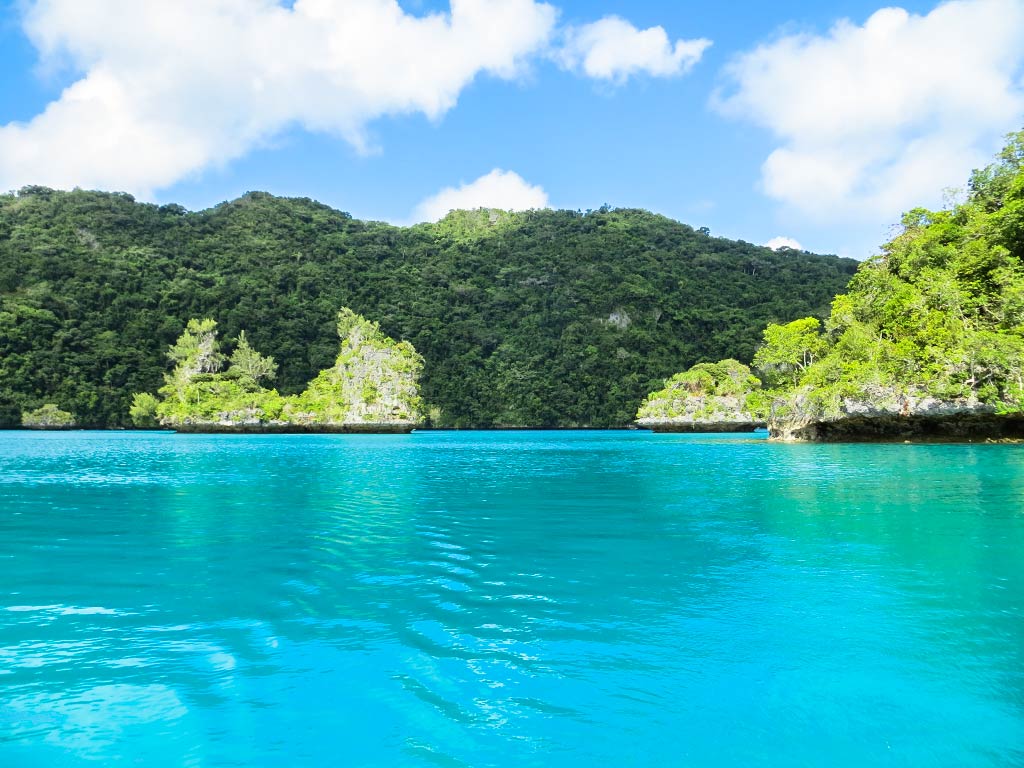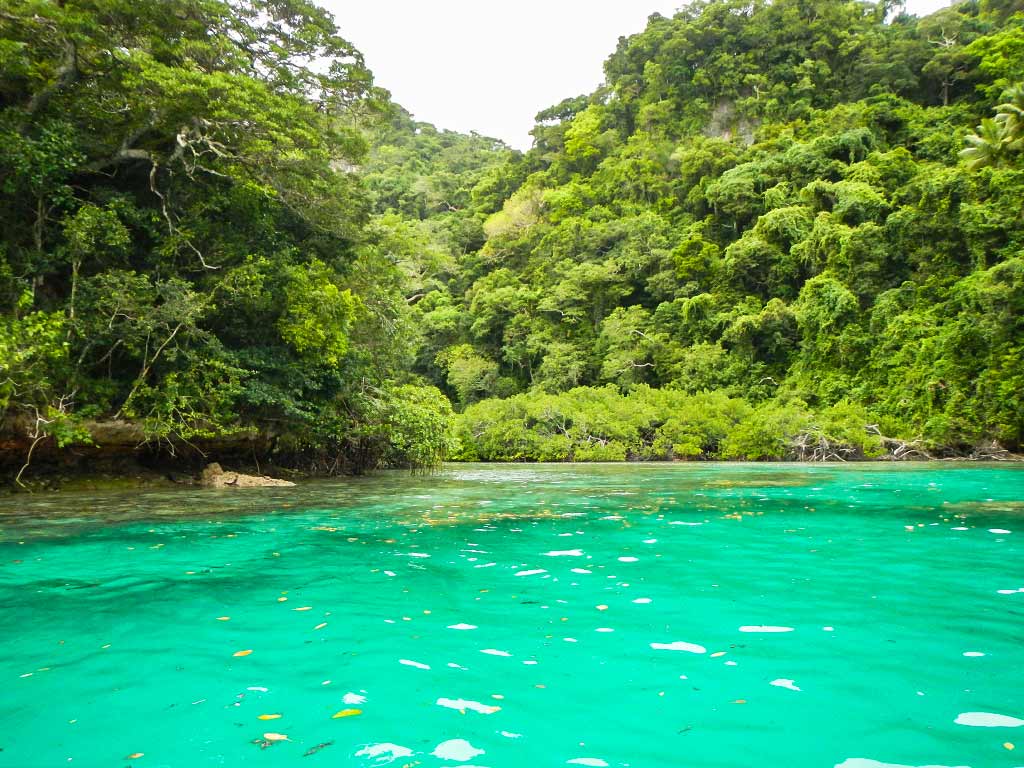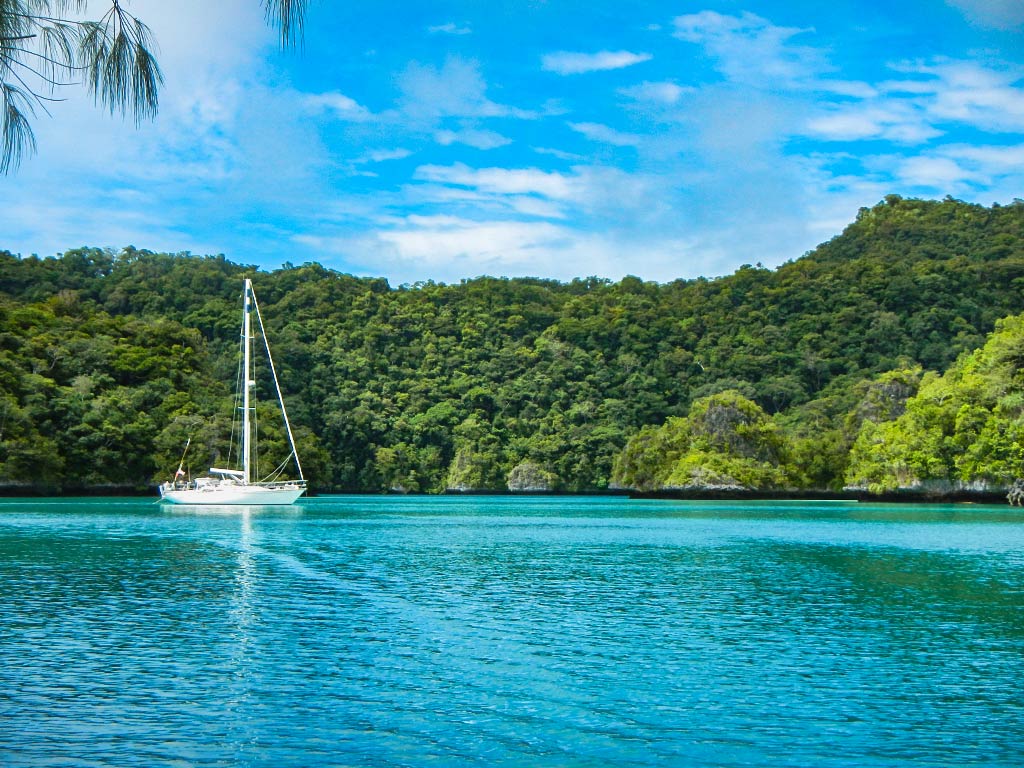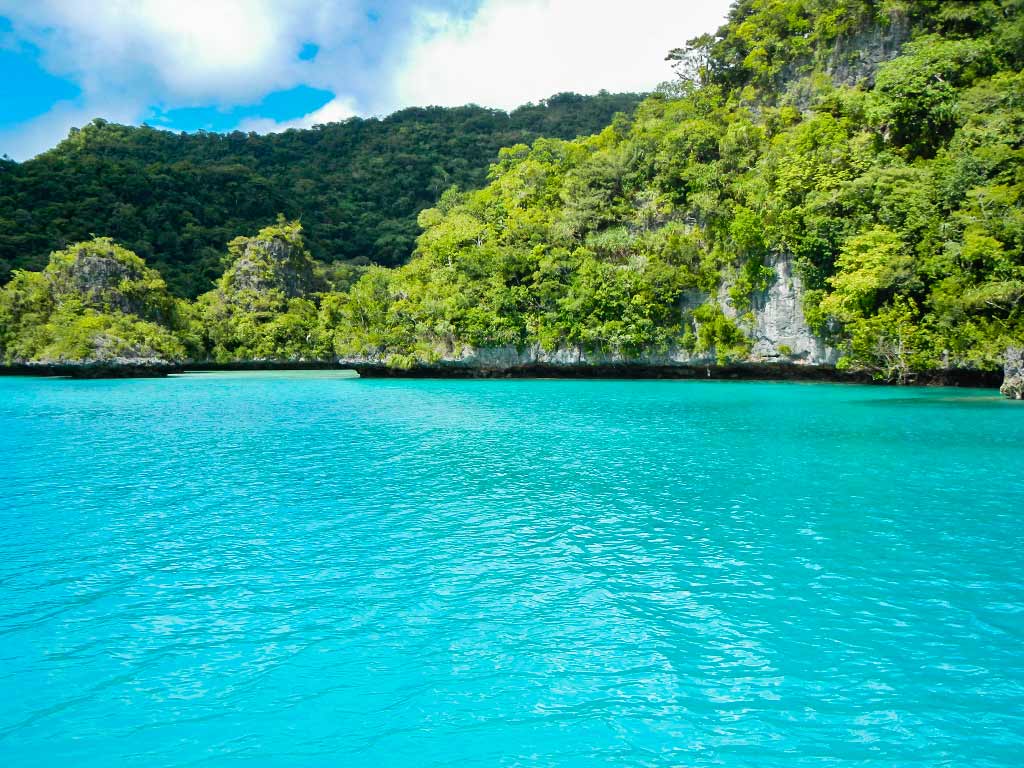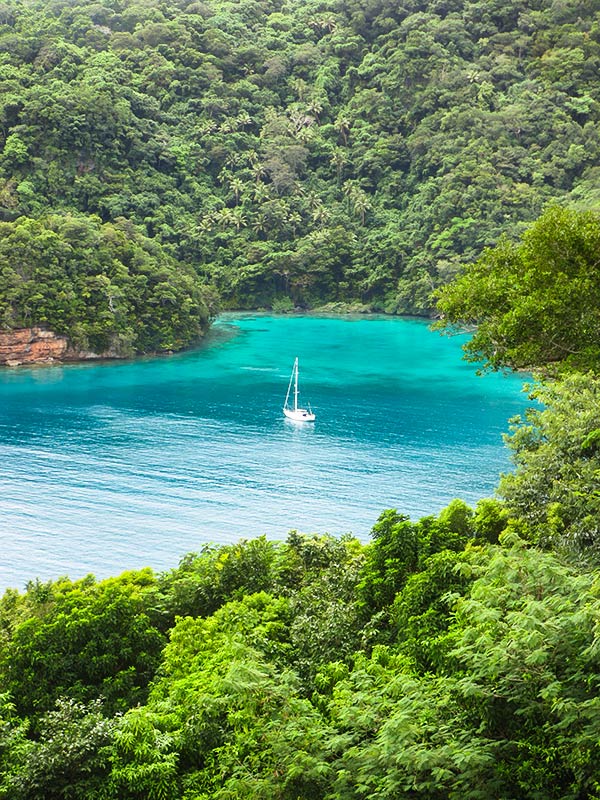Here are some thoughts on cruising the Lau Group of Islands
THE LAU ISLANDS
The Lau Islands are divided into two groups: The Northern Lau and the Southern Lau. Both groups are remote and take extra effort to get to, but they are special and worth that effort. Unfortunately they are not close together. As a result, the majority of cruisers only get to one of the two groups.
Generally when people speak of the Northern and Southern Lau, they specifically mean the islands of Vanua Balavu (in the Northern Lau) and Fulaga (in the Southern Lau). There are other islands in the two Lau groups, but they aren’t the reason people go to the Lau and are less visited by cruisers. Also, you may hear people refer to the “Bay of Islands.” This specifically is an anchorage area at Vanua Balavu island in the Northern Lau group.
TIPS ON VISITING THE LAU ISLANDS
Doing Both the Northern and Southern Lau If want to do both the northern and southern Lau, we’d advise going to the Southern Lau first as that’s the most difficult to get to. It’s much easier to get to the Northern Lau from the Southern Lau than vice versa. We know a boat who had a great window, went to the Northern Lau and then never was able to find a window to the Southern Lau in his time frame. If he’d done it the other way around it would have been no problem.
Stocking Up on Supplies
The Lau is an area you want to be well-provisioned for. There are no restaurants or much in the way of markets; so you need to be provisioned as though you are going on a long passage. And you want to be well-stocked with your favorite booze. (Don’t be like the person we know who left Fulaga after only one week because he was out of beer.)
Bottom Line: If you don’t have a lot of storage capacity, you may need to sit and wait for a weather window from Savusavu or Suva, stock up at the last minute, then then head directly to the Lau. (Again: we really advise starting with the Southern Lau first).
Note for Carnivores: Before head out to the Lau, or other anchorages, you’ll want to stock up on meat. There are a couple of butchers in Savusavu who will vacuum pack and freeze your chosen cuts of beef, chicken and pork. Even if you don’t have a freezer, it will last a long time in the fridge. (The butcher we used and liked was in the Waitui Marina building in Savusavu).
Timing a Visit to the Lau Islands
We were lucky to be out of sync with most cruisers when we went to the Lau. Earlier in the season there had been a big rush of cruisers (22 or more boats) headed for Fulaga at the same time. While there’s lots of room there, I think it was probably nicer later in the season (September) with only a few other boats. This was a few years ago when the Lau was newly opened; so it could be that things have evened out more by now.
Bottom Line: If you’re deciding whether to start with the Lau or cruise another area first, you might decide on the latter if you note a large number of boats are headed to the Lau all at once. This is especially true of the northern Lau (Vanua Balavu) which sometimes has arriving rallies and isn’t all that big an area. Check the rally schedules and avoid the areas they are headed unless you like a crowd.
Entering the Atolls
Be aware that Fulaga is like an atoll with a narrow pass. You need to enter at slack tide, and high tide is preferable. Thus you’ll want to time your arrival carefully, arriving early enough to sit and watch the entrance while ready to motor in as soon as the water calms down.
Vanua Balavu is a bit like an atoll but has wide passes and you can enter and exit at any time. The west pass is the easiest and most convenient if arriving from Fulaga.
VISITING FULAGA (THE SOUTHERN LAU)
Fulaga is the key island in the southern Lau group. It’s down at the southeast end of Fiji;so getting there involves traveling against prevailing winds. There are no markets so you have to stock up before you go, and when we visited there wasn’t much in the way of waypoints and information. Since it’s been a few years since we were there; I’d assume there’s now much more information.
Fulaga is an overnight (or two depending on your departure time) trip from pretty much anywhere, and you have to time your arrival to coincide with slack tide in daylight so you can go through the narrow pass into the lagoon. Conversely, you have to time your exit through that same pass and do it in calm weather; so be aware that you can’t just leave whenever it’s convenient. And whenever you move about between anchorages, you will probably want someone keeping a lookout on the bow. This is a place that takes extra effort to visit.
So why go? Because it truly is one of the earth’s most fantastically beautiful places, reminiscent of Palau. In the atoll are rock island groups and long stretches of pristine white beaches. You could probably spend a year exploring this place as clusters of rock islands make their own little worlds, and I’d guess that you could probably find a beach (ranging from tiny to a long stretch) for every day of the year. And the diving and snorkeling are amazing, especially in the pass. (Although there are actually several nice areas to snorkel here.)
If you like village life, there is that, too. Everyone has to begin with the anchorage that has the path to the village. In the past, there was one guy (Tai) who had taken it upon himself to be the main liaison between cruisers and the village. He was great at it, but that didn’t necessarily sit well with the rest of the villagers as they’re all supposed to take turns being host family. Tai was away when we went ashore; so we just walked down the path and came across a really nice couple who invited us to their home and took us to the chief.
Since our visit, the people of Fulaga have really implemented the the host family system. Visitors are now strictly assigned to host families.
The process for visiting Fulaga goes like this:
Take your boat to the village anchorage and find a spot. If it’s still relatively early in the day you should go ashore, otherwise head in the following morning.
When you go ashore, duck into the little storage building there and put on your sulu. If no one has appeared to meet you, follow the path to the village. If you haven’t been met by then, go into the village and someone will greet you and arrange for you to see the chief. At some point, you’ll also be assigned a host family.
You’ll do your sevusevu and present the fee along with your kava, and if it’s close to Sunday (like Friday or Saturday), you’ll be invited to attend church (and you pretty much should say yes). You’ll also be invited to the Sunday meal (after church) at your host family’s home, and you’ll also say yes to this. We did go to church, and to our host family’s meal, and since this village is so removed, we brought a gift bag with several items we thought they’d like. They have very little and can use things like tools, cookware, anything you can think of.
The people are of the village are very warm, and they will embrace you to the extent you wish to be embraced. Once again, you choose your experience. While we were there, one cruiser was in the village daily, helping them with projects, going fishing, and spending time. And he had people out to his boat, including watching a movie which was a really neat thing for the kids. At the other end of the spectrum was us who quickly went off to the anchorages, but what made that work is that we were clear with our host family (and at our sevusevu with the chief) that our goals were to snorkel and visit the anchorages. By being clear with our intent, I think they understood when we didn’t return to the village after leaving to visit the anchorages a couple of days later. People spend up to a month here, and some go back for Sunday services and some don’t.
Update: From what we’ve observed, the host family system has changed things and made it more difficult for cruisers to be independent from village life. It seems the expectation is to come in for Sunday church and lunches, and your host family will expect to be invited to visit you (and be entertained) on your boat. We haven’t visited since these changes have occurred but from what we’ve heard things are quite different. We’re not happy about the changes, which I talk about in this post.
Note: They do wood working here, and you’ll probably want to buy something not only to support the village, but because they have some really beautiful wares. Plus the village may have a lovo out on the beach. If they do, think of it as a pot luck and bring a dish, maybe provision for this before you come.
Do be aware of the fee (I think it was 50fd if I remember correctly). If you don’t like the fee; you don’t have to come. If you do come, pay it and don’t argue.
We spent nearly 4 weeks here and feel very lucky to have been able to experience this amazing place. There is something here for everyone.
As far as getting here, you need conducive weather, and you need to be stocked up on food and supplies. This means it’s really best to wait for calm weather and do an overnight (or two) motor from Savusavu or Suva. Some people manage to make it from Vanua Balavu, but they have only a very small market with not much in the way of supplies, so you’ll be going to Fuluga with depleted supplies from your time in Vanua Balavu and waiting for a weather window south. If you leave from Savusavu or Suva, you can see a window coming and get fully stocked, then get down to Fuluga. From Fulaga it is much easier to get a weather window to Vanua Balavu than vice versa, and you can go there on your way back north.
VISITING VANUA BALAVU (The Northern Lau)
The Northern Lau, specifically its key island, Vanua Balavu, is east of the Fiji group and an overnight trip from Fulaga. This is the location of the Bay of Islands, plus some other nice anchorages. The Southern Lau tends to get all the accolades, but the northern Lau, though different, is just as special. Well, at least to us.
If you took a poll, most people would tell you Fulaga is best. If you love beaches, be aware there aren’t really any nice ones here. If you loved the village in Fulaga, you might find this one is not as embracing and special. The snorkeling, while nice, isn’t nearly as spectacular as Fulaga. There’s not actually a lot of places to anchor; so don’t come when a crowd (rally) is here. The fee is higher here (If I remember correctly, 30fd per person), and the anchorages are far more limited.
So why bother to go? Because of the scenery, especially in the Bay of Islands. It has Thailand-like rock pinnacles, coves and hidden little places amid rock islands. It’s unique with a Pacific Northwesty-feel from its vegetation and mountain peaks. In the water, electric blue fights it out with electric green every hour of the day as the sun and clouds shift the intensity of light
If colorful water and rock pinnacles don’t do much for you, you might want to skip this. I did talk to someone who was pretty disappointed with it, but he loved that village in Fulaga and didn’t care as much about this sort of scenery. So, in all I guess while there is something for everyone in Fulaga, there is not necessarily something for everyone here in Vanua Balavu. I’d advise looking at Google Images and seeing if it intrigues you. We loved it.
When you come here, you need to first anchor off Dalconi Village, and then ask for Sam, who is the liaison between cruisers and the chief, and do the sevusevu thing, even if it’s late in the day. (From what I gather, they’ve had people come in and skip out on the sevusevu and fee, and now they get worried if you wait too long.)
When you do the sevusevu here at Dalconi Village, you are covered for them and for the Bay of Islands a few miles away. (There are no people in the Bay of Islands area). If you visit other villages, you will need to do sevusevu there. Dalconi, in turn, provides a few services, coming in their boat to collect trash and offering trips to see the sea caves (for a fee). By the time we got to the Bay of Islands, it was late in the season, we were about the only people there, and the trash collecting and sea cave excursions had dwindled out along with the cruisers. That was OK with us because we loved having this area to ourselves.
Since we didn’t have good holding off Dalconi, we spent the night in Malaka Bay right nearby. There’s a bus that stops twice a week by the village in Malaka and goes to the Lomaloma, the town on the other side of the island. We opted to go because we were nearly out of eggs (and as it turned out the town was really neat to see). We would need to walk through the village at Malaka to get to the bus stop but were told by Sam we would not need to do a sevusevu there. But on our way through a man came up and said we needed to do a sevusevu with their chief when we came back through. We said OK, but since we were leaving as soon as we got back, we didn’t do it.
After you’ve finished your sevusevu and provisioning, you’ll probably want to start your Vanua Balavu visit in the Bay of Islands not far north of Dalconi Village. There are several areas to visit on Vanua Balavu, but if you only have time to do one, make it this one. Once you’re finished in the Bay of Islands, there are some other nice anchorages on this island to consider.
One is Mbavatu. It looks large, but it’s deep and not easy to anchor. The whole area is owned by a foreigner, the same guy who owns the Copra Shed marina. He’s built a yacht club here with moorings, but it was closed when we were there. We didn’t know if we were allowed to pick up a mooring so we motored over to the beautiful southwest bay only to find a mooring smack in the middle of it. We went to the innermost part of this harbor and managed to get anchored in fairly deep water after finding too much coral further in. Come to find out later, yachties are welcome to pick up a mooring ball by the club.
Mbavatu is not Fijian owned and you don’t need to do a sevusevu, but there’s a caretaker and some other workers on shore, and you can say hello if you run across them.
One must-do is climbing the series of stairs up the hillside. There’s a boat dock near the head of the bay where you can tie up your dinghy, and from there it’s not hard to find the stairs. Once you’ve climbed them, go east to find the caretakers’ settlement and plantation. Continue walking until you get to a couple of vacation rental places. They’ll probably be unoccupied, and if so, you can walk around the yards to see terrific views of Mbavatu harbor on one side and a bit of the Bay of Islands area on the other side.
Just south of Mbavatu is a popular but narrow bay called Little Bay, and we’ve heard it’s pretty nice. You do need to do a Sevusevu there, but from what we hear it’s a different process. It seems it’s a very long walk to the local village; so they send someone out to collect the kava from visiting yachts and bring it to the chief. I’m not sure about my accuracy on this so consult Soggy Paws or Venture Farther.
Beyond that, there are other village anchorages further south, all requiring Sevusevu. This is out of our realm so we’d advise consulting Soggy Paws or Venture Farther.
The Southern vs the Northern Lau Groups
Now that we’d visited Fulaga in the Southern Lau group of islands, we were anxious to see the Northern Lau.
As I’ve mentioned before, the Lau group of islands in Fiji had only recently opened to the general population of cruisers. By “general population” I mean those not willing or able to pay the big bucks (and I mean really big bucks) for the formerly-required very special permit. Now with that permit no longer required, the islands were open to all.
The Lau Group of islands covers about 150 miles and can be divided into two distinct groups: the Southern Lau Group and the Northern Lau Group.
While they’re a long distance apart from each other, the Lau groups have a lot in common:
- Both groups are remote, sitting near the eastern border of Fiji.
- Both are hard to sail to (from Fiji’s main ports) as they require traveling against the prevailing winds.
- Both groups had only recently been included in the general Fiji cruising permit.
- Both groups had very little tourism until 2013.
- Both groups require a fee to visit, payable to the chief when doing the required sevusevu (welcome) ceremony. (Yes, the expensive special permit is no longer needed, but the islands themselves require a fee.)
Both groups contain a number of islands, but in each group there is clearly one must-do place. In the Southern Lau this is Fulaga, and in the Northern Lau it is Vanua Balavu, specifically an area known as the Bay of Islands near the Vanua Balavu’s north end.
Where Fulaga and Vanua Balavu differ is in the way they look. Fulaga is an atoll containing a beautiful lagoon filled with rock islands, water in every shade of blue, and more beaches than we could count. Below, a few examples to sum up the general look of Fulaga: (You can click to enlarge/scroll through photo galleries below.)
Vanua Balavu, on the other hand, is a rather large and mountainous island with little in the way of beaches. In fact, the Bay of Islands area has no beaches at all! And while it does have rock islands, they are bigger and greener than those of Fulaga. The Bay of Islands is also known for its colorful water, but here there are as many greens as blues and the colors can seem almost electric. Below, a few photos to try to sum up the general look of Vanua Balavu:
I can also note that since Fulaga had been more isolated than Vanua Balavu, its villagers were particularly friendly and welcoming. Vanua Balavu is a somewhat large island with many villages and a higher population than Fulaga, a good-sized central town, an airport with regular flights, and in general seemed to have plenty of contact with the outside world.
Because the two island groups are so far apart, most of the cruisers had time to do only one group. Naturally anyone who managed to do both was anxiously questioned: “Which did you like better?” While most people liked both, Fulaga seemed to be the winner. Yet there were enough people who preferred the scenery of the Northern Lau to make us sit up and take notice. It sounded like it would be well worth the effort to see it and make the decision for ourselves. The link below will take you to the post with our answer. -Cyndi
https://twoatsea.com/good-bye-beautiful-anchorage-bay-of-islands-vanua-balavu-fiji/

